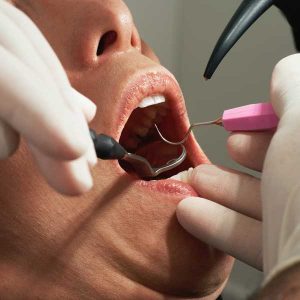Many patients present to our office with a fear of the dentist. This fear may have arisen from a traumatic prior experience or it may be associated with “White Coat Syndrome”. Some patients simply have anxiety due to the noises found in the dental office (these noises can be from the dental drill or from the instruments used to examine or clean the teeth). For others, the anxiety may stem from a fear of dental anesthesia or some other part of the dental treatment. These patients almost always inquire if we can put them to sleep for their treatment. While we do not administer anything that would put someone to sleep, we can offer patients something that will make them more relaxed and less anxious during their treatment. This is known as conscious sedation. The patient is awake and able to talk and interact with the staff, but they are less aware of and less focused on all of the different aspects of their dental treatment. This form of sedation can also provide other benefits. It makes it easier for patients to open their mouths wide since their facial muscles are relaxed. And those who gag easily may find that their gag reflex relaxes as well.
For routine general dentistry, sedation is usually accomplished with either Nitrous Oxide, commonly known as “Laughing Gas”, or with a pill that is usually taken an hour before treatment, or with a combination of the two. Nitrous Oxide is safe for most patients, even for children. The gas is given via a mask placed over the nose. After treatment is completed, the gas is flushed from the system in about five minutes. Patients can drive home and resume normal activities very quickly. The oral form of sedation, however, is longer lasting which makes it necessary for an escort to be present to drive the patient home. To be a candidate for this form of sedation, the patient must be in good health and have an open, unobstructed airway, i.e., no large tonsils or other tissue. An oral sedative is not recommended for those who are already taking other sedatives, such as those used to induce sleep or treat depression. A pulse oximeter is used during the procedure to monitor vital signs and blood Oxygen levels. Which of these two methods is used will depend on the degree of anxiety and on the type and length of treatment being performed.
So no longer should your dental anxiety inhibit you from getting the care that you deserve. Feel free to share with us any fears that you may have in regards to visiting the dentist, so that we can find the best treatment solution for you.








